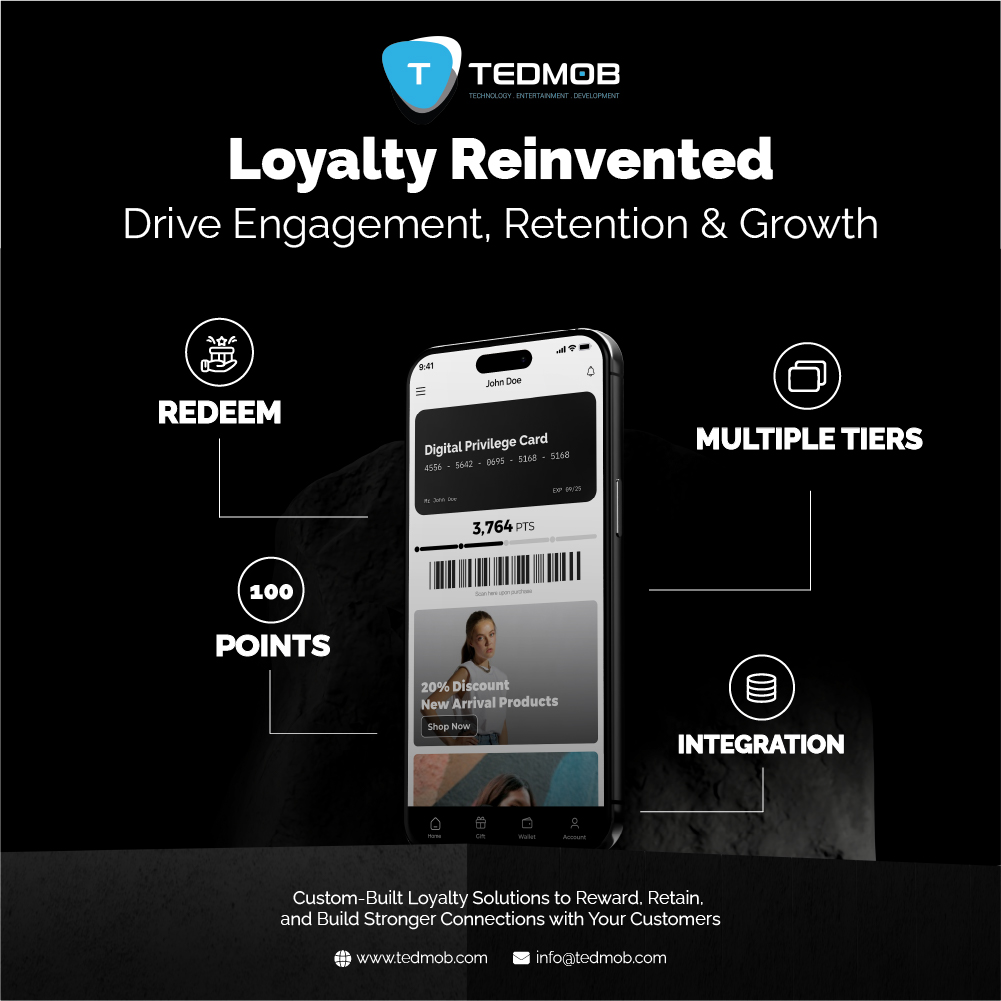Diversification is important within the telecom industry as it molds a fast, commoditized market; thus, telcos are increasingly expanding their offerings beyond traditional telecom services by focusing on sectors that provide value-added services (VAS) to meet diverse consumer and business demands.
Although connectivity is becoming a commodity and nationwide coverage is often overlooked, network quality—both the experience and the service—will remain a solid differentiator.
Expanding markets, monetizing data, and developing strategic partnerships form the core of new revenue streams, which telcos are currently exploring.
Key VAS Areas Telcos Are Investing In
Value-added services (VAS) have shifted from being a complementary offering to a powerful business driver for telecom operators. It is now a key factor to consider in the loyalty and customer retention verticals as it stimulates engaging, personalized experiences—differentiators in a competitive market. More so, VAS generates new revenue streams through subscriptions and other digital services, solidifying its role as a core component of modern telecom strategies.
1. Financial Services (Fintech)The convergence of fintech and telecommunications is indeed reshaping the financial services landscape, and according to the recent discourse at the Telecom Review Leaders’ Summit 2024, in the GCC region alone, a noticeable shift in value has emerged—from business-to-business (B2B) to business-to-consumer (B2C) models—in the UAE and Saudi Arabia.
Taking this into consideration, telcos in the GCC have made impressive strides in deploying mobile payments and digital wallets as part of their services. Telcos are further leveraging their infrastructure to offer fintech innovation, especially in underbanked and underserved regions.
After receiving licenses from the Central Bank of the UAE to offer new digital financial services, du officially launched du Pay in April, 2024. Commenting on this new venture, CEO, Nicholas Levi, said, “What sets us apart is we are leveraging du’s strong customer-centric focus, infrastructure, and telco benefits to make our value proposition even stronger.”
In May, 2024, ‘walletii by Ooredoo,’ a new state-of-the-art fintech solution, officially made its debut in Oman. Mirko Giacco, CEO of Ooredoo Fintech, stated, “By offering a seamless and secure digital wallet experience, we aim to empower consumers and businesses alike, driving financial inclusion and innovation across the region.”
Additionally, in February, 2023, Mobily’s fintech platform was launched. Mobily Pay, built on the Ericsson Wallet Platform, provides secure, simple, functional, and relevant financial management in Saudi Arabia. It has also become a merchant wallet for point-of-sale users and offers e-vouchers to strong brands.
Other telco-driven e-wallet services include Orange Money, FRiENDi Pay, e& money, and stc pay. Zain KSA’s Tamam is also the first company to be issued a license for micro-financing in the Kingdom from the Saudi Central Bank (SAMA).
2. Media and EntertainmentPMP Strategy experts confirmed that by building a comprehensive mobile financial services (MFS) solution, mobile operators can tap into new revenue streams, enhance customer loyalty, and significantly expand their market influence.
Powered by 5G, 5G-Advanced, fixed wireless access (FWA), fiber, and other advancements, telcos have sought to reinvent themselves with new tech-driven product offerings—including streaming services, cloud gaming, and e-sports—to enable digital lifestyles.
Boasting 10x capabilities, 5G-A’s globally unprecedented speed (up to 10 Gbps) will lead to faster data transfer, ushering in a new era of high-quality streaming and seamless cloud services.
Obaid Rahman, Head of International Wholesale, du, told Telecom Review that they have seen “significant growth in services like content streaming and gaming over the past six-to-seven years.” This started with the Middle East’s first 360 degree virtual reality (VR) video streaming on a 5G network, before culminating in the new du Innovation Center, where continuous upgrades will be incubated to deliver seamless video streaming and lower-latency online gaming experiences, among other use cases.
Zain KSA has expanded its gaming ecosystem with over 1,500 top PC games, powered by Zain Cloud Gaming and advanced cloud computing technology. Through collaborations with OSN, Shahid, and STARZPLAY, 5G users gain complimentary access to premium OTT video services. Additionally, Zain KSA partnered with NVIDIA to launch Saudi Arabia's first 5G cloud gaming platform.
Delivering exceptional, lag-free experience for live online cloud gamers, at GITEX 2024, Ericsson and e& UAE debuted Low Latency, Low Loss, Scalable Throughput (L4S) technology on a 5G commercial network, representing a first in the MEA region.
3. Smart Home and VehiclesThere are around 175 million smart homes worldwide, with the market expected to yield a growth rate of 21.4% by 2025. It can, therefore, be considered that we are at the golden age of smart technology, whereby smart homes are being built with seamless connectivity, interoperability, and automation at the core.
Telecom Review witnessed the marvels of unparalleled smart home experience during an exclusive 5G-A villa tour in 2023. With more flexible, wireless experience, the 5G-A Villa exhibits what will soon become reality for modern homes, including applications such as 8K viewing, 3D displays and designs, naked-eye 3D, and virtual reality (XR) gaming.
Zain KSA continually enhances its solutions to meet the needs of tech-savvy users, with its 5G FWA strategy delivering reliable and high-quality home internet. Building on this strong connectivity, Zain KSA has introduced IoT home devices, along with security and entertainment solutions.
On the other hand, a Juniper Research study found that the number of vehicles with embedded connectivity will reach 200 million globally by 2025 (30 million of which will be 5G-centric); hence, one of the main beneficiaries of this growth will be mobile operators. By acting as an M2M connectivity provider, the incorporation of eSIMs into connected cars will enable operators to leverage their existing network infrastructure to claim USD 3 billion in additional service revenue by 2025.
This will push operators to establish wholesale agreements with automotive OEMs, securing consistent revenue streams from the connected car market.
4. Cloud and Edge ComputingTelcos provide cloud computing and edge processing services, supporting critical, industry-specific, low-latency applications. Moreover, as enterprises demand more data solutions, some telcos are offering storage, backup, and management services.
An example of this is the Ericsson Edge Exposure Server, which leverages network exposure capabilities to support simple and developer-friendly APIs and edge application ecosystems. In collaboration with solutions by stc, the Saudi-based telco validated the Snowball Edge solution powered by AWS to provide MPN and cloud computing services at the edge of stc’s 5G network.
Rosenberger is also committed to delivering innovative, high-performance, and environmentally sustainable micro data center solutions. Through Lyra, the telecom vendor is shaping the future of edge computing and driving a more connected, intelligent, and efficient digital ecosystem.
5. Smart Cities and InfrastructureTelcos also play a key role in providing seamless, secure connectivity for smart city infrastructure. Some telcos are also exploring partnerships in energy management, such as smart grids, to support efficient energy distribution and consumption.
Salam’s robust 5G infrastructure is enabling emerging technologies and supporting advancements in smart cities, logistics, and e-commerce, while also driving innovation in manufacturing and industrial automation.
As technology advances rapidly, supporting infrastructure must remain agile, secure, and scalable. InfraX, the ICT arm of Digital DEWA, is leading this transformation with cutting-edge SD-WAN and IoT connectivity solutions, redefining digital networks and laying the groundwork for smart cities, efficient industries, and seamless connectivity in the UAE and beyond.
In 2024, ZTE deployed its Rural EcoSite in Liberia, establishing 128 turnkey, cost-effective, and eco-friendly communication sites in just three months, bringing connectivity to some of the most remote regions.
Former e& enterprise CEO, Salvador Anglada, elaborated on the company’s contributions across various domains in an interview with Telecom Review, noting, “Our Safe City solutions, such as the National Fire Alarm system, exemplify the intelligence and connectivity embedded within our platforms. These systems are designed to detect and respond to fire-related incidents swiftly and effectively, enhancing safety on a national scale.” Moreover, e& has modernized traditional utilities, such as the smart grid, by implementing advanced technologies to monitor and manage energy consumption in real-time.
Getting Smarter with Data
Smart use of customer data, combined with strong data management capabilities, can form the basis of commercial tools and greatly improve performance in the core telecom business.
Data can boost commercial performance, and most of these capabilities can be implemented in next-generation recommendation engines that employ AI algorithms to optimize revenues or profits.
An AWS-sponsored study found that CSPs with a higher degree of data capability are pursuing revenue-generating use cases such as personalization and new product feature generation. 64% of CSPs surveyed agreed that many of the GenAI use cases being considered are new applications.
“In 2025, operators will have to prove long-term ROI and demonstrate the value of their generative AI production deployments prior to implementation. The aim is to create a flywheel effect that helps scale the return on the necessary investments in the platforms, skills, and partnerships, while optimizing costs and keeping output performance, compliance, and quality high,” reflected AWS in an exclusive with Telecom Review.
Having said that, AI appears to be on track in maturing well beyond the ‘chatbot craze’ and is now revolutionizing operations, providing better customer interactions, and creating new product offerings. A McKinsey analysis also indicated that telcos implementing the most advanced responsible AI (RAI) practices could deploy use cases that collectively capture up to USD 250 billion in value worldwide by 2040.
More Opportunities to Come
There are plenty of opportunities for revenue growth beyond the areas where telcos are currently active. The key is to consistently step up and pursue them by adding new products and services over the next decade to cater to the evolving demands of the market.Moving forward, telecom operators will evolve, becoming powerful, multi-purpose service providers.










